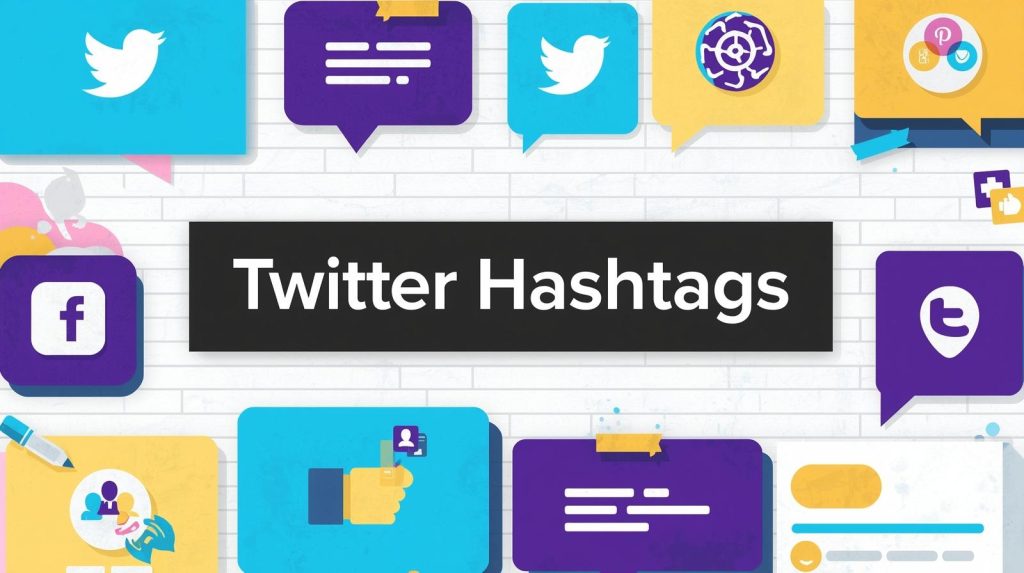Twitter remains one of the most powerful social media platforms for engagement, brand visibility, and real-time conversations. But with millions of tweets posted every day, how do you make sure your content gets noticed? The answer lies in using the best Twitter hashtags strategically.
In this guide, we’ll explore what hashtags are, why they matter, how to find the best ones for your brand, and tips for maximizing engagement on Twitter in 2025.
What Are Twitter Hashtags and Why They Matter
A hashtag is a word or phrase preceded by the # symbol (e.g., #MarketingTips) that categorizes content on Twitter. Hashtags make your tweets discoverable by people beyond your followers.
When used effectively, hashtags can:
- Increase visibility and engagement.
- Connect your content to trending topics.
- Help your brand participate in wider conversations.
For example, a tweet using #DigitalMarketing is more likely to reach users interested in marketing than a tweet without any hashtag.
Benefits of Using the Best Twitter Hashtags
Using the right hashtags can have a significant impact on your Twitter performance. Here’s how:
- Boost Engagement
Tweets with relevant hashtags get more likes, retweets, and comments. - Expand Reach
Hashtags make your content discoverable to users who are not following you yet. - Join Trending Conversations
Trending hashtags allow you to participate in real-time events and discussions, increasing visibility. - Enhance Brand Authority
Consistent use of niche-specific hashtags positions your brand as an industry leader. - Drive Traffic and Conversions
Tweets optimized with strategic hashtags can lead to more clicks on your website or landing pages.
How to Find the Best Twitter Hashtags
Finding the right hashtags is crucial for maximizing engagement. Here’s how you can discover the best Twitter hashtags for your niche:
- Monitor Trending Hashtags
Check the “Trending” section on Twitter to see what topics are currently popular. Use relevant trends to your advantage. - Use Hashtag Research Tools
Tools like Hashtagify, RiteTag, and Twitonomy can help you identify popular and relevant hashtags in your industry. - Analyze Competitors
Observe which hashtags successful competitors are using. This can provide insights into hashtags that resonate with your target audience. - Focus on Niche-Specific Hashtags
Generic hashtags like #love or #fun are too broad. Find hashtags specific to your industry, products, or audience for higher engagement.
Categories of Effective Twitter Hashtags
To make the most impact, you need to understand the types of hashtags you can use:
- Trending Hashtags
Popular hashtags related to current events, viral topics, or viral challenges. Example: #WorldEnvironmentDay. - Industry-Specific Hashtags
Hashtags relevant to your niche help target the right audience. Example for digital marketing: #ContentMarketing, #SEOtips. - Branded Hashtags
Unique hashtags created specifically for your brand or campaign. Example: #NikeRunClub. - Event or Seasonal Hashtags
Relate your content to holidays, seasons, or events. Example: #BlackFridayDeals, #SummerVibes.
Best Practices for Using Twitter Hashtags
Using hashtags strategically ensures they bring value rather than clutter:
- Limit Hashtags per Tweet: Optimal engagement comes from 1–3 hashtags per tweet. Too many can appear spammy.
- Use Hashtags Naturally: Incorporate them into the text of your tweet rather than just listing them at the end.
- Avoid Overly Generic Hashtags: Hashtags like #fun or #good are highly competitive and may not help you reach your target audience.
- Track Performance: Monitor which hashtags are performing well using Twitter Analytics or tools like RiteTag.
Examples of the Best Twitter Hashtags in 2025
Here’s a curated list of high-performing Twitter hashtags across popular categories:
Marketing & Business:
#DigitalMarketing, #MarketingTips, #SocialMediaStrategy, #Entrepreneur, #BusinessGrowth
Technology:
#AI, #TechTrends, #Innovation, #DataScience, #MachineLearning
Entertainment & Pop Culture:
#Movies, #Streaming, #Music, #PopCulture, #Gaming
Health & Fitness:
#FitnessTips, #HealthyLiving, #Wellness, #MentalHealth, #WorkoutMotivation
Travel & Lifestyle:
#TravelTips, #Wanderlust, #Lifestyle, #Foodie, #Adventure
Using a mix of trending, niche, and branded hashtags ensures your content reaches the right audience while participating in larger conversations.
Common Mistakes to Avoid
To maximize your Twitter growth, avoid these common mistakes with hashtags:
- Using Too Many Hashtags: Overloading tweets reduces readability and engagement.
- Irrelevant Hashtags: Using hashtags unrelated to your content can confuse users and reduce trust.
- Ignoring Analytics: Failing to track hashtag performance leads to missed opportunities.
- Copying Generic Hashtags: Generic hashtags might have high search volume but low engagement.
Tools to Discover and Analyze Twitter Hashtags
Several tools make hashtag research easier and more effective:
- Hashtagify – Provides data on hashtag popularity and trends.
- RiteTag – Suggests hashtags based on your tweet content for maximum engagement.
- Twitonomy – Offers analytics on hashtag usage, competitors, and engagement rates.
- Trendsmap – Visualizes trending hashtags geographically for localized campaigns.
Using these tools ensures you’re always using the best Twitter hashtags to grow your reach.
Conclusion
Twitter hashtags are more than just symbols—they are powerful tools for expanding reach, boosting engagement, and increasing brand visibility. By understanding how to find the best Twitter hashtags, using them strategically, and avoiding common mistakes, you can take your Twitter marketing to the next level in 2025.
Start experimenting with trending, industry-specific, and branded hashtags today to grow your audience and engagement. Remember, the key is to stay relevant, track results, and adapt your strategy over time.

